Methods & Tools
-
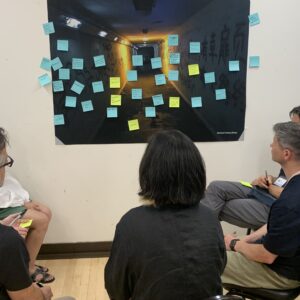 Culture circles is a participatory educational method developed by Paulo Freire to foster literacy and critical consciousness through dialogue. It emphasizes horizontal, dialogical learning, where participants and facilitators engage as equals in analyzing their lived experiences and co-creating knowledge. The term “circle” underscores this horizontal structure, symbolizing equality among participants and rejecting the top-down dynamics […] - Dec 8, 2024
Culture circles is a participatory educational method developed by Paulo Freire to foster literacy and critical consciousness through dialogue. It emphasizes horizontal, dialogical learning, where participants and facilitators engage as equals in analyzing their lived experiences and co-creating knowledge. The term “circle” underscores this horizontal structure, symbolizing equality among participants and rejecting the top-down dynamics […] - Dec 8, 2024 -
 Democratic design experiments, as explored by Binder, Brandt, Ehn, and Halse (2015), are participatory processes that bridge the boundaries between “parliamentary” and “laboratory” practices. These experiments bring people together to explore and discuss the controversies around a thing or a matter of concern. Instead of aiming at creating products or solving problems, these experiments turn design […] - Dec 4, 2024
Democratic design experiments, as explored by Binder, Brandt, Ehn, and Halse (2015), are participatory processes that bridge the boundaries between “parliamentary” and “laboratory” practices. These experiments bring people together to explore and discuss the controversies around a thing or a matter of concern. Instead of aiming at creating products or solving problems, these experiments turn design […] - Dec 4, 2024 -
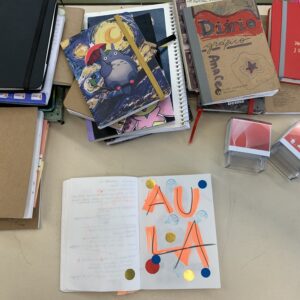 Visual diary (a.k.a. visual journal) is a method in which a constant, regular, and self-determined creative activity is proposed for the daily life of its bearer. The activity may include recording ideas, creating concepts, taking notes, or playing. The main difference to a personal diary is that here, the owner doesn’t just record what has […] - Nov 6, 2024
Visual diary (a.k.a. visual journal) is a method in which a constant, regular, and self-determined creative activity is proposed for the daily life of its bearer. The activity may include recording ideas, creating concepts, taking notes, or playing. The main difference to a personal diary is that here, the owner doesn’t just record what has […] - Nov 6, 2024 -
 From the outset of their design education at UTFPR, Alanis Louise de Mello Zukowski and Maria Vitória Ribeiro Kosake were struck by a disconnect between their aspirations and the education they received. The design curriculum seemed narrowly focused on technical skills and market demands, leaving little room for critical reflection or social engagement. As they […] - May 9, 2024
From the outset of their design education at UTFPR, Alanis Louise de Mello Zukowski and Maria Vitória Ribeiro Kosake were struck by a disconnect between their aspirations and the education they received. The design curriculum seemed narrowly focused on technical skills and market demands, leaving little room for critical reflection or social engagement. As they […] - May 9, 2024 -
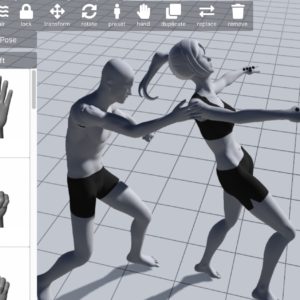 Image theater is the most popular and accessible Theater of the Oppressed technique. It consists of telling an oppression story through a static body image. The spect-actors stand in postures that, altogether, suggest an oppressive action. There is no voice, explanation or movement in the image, although that can be added later for further inquiries […] - Sep 20, 2023
Image theater is the most popular and accessible Theater of the Oppressed technique. It consists of telling an oppression story through a static body image. The spect-actors stand in postures that, altogether, suggest an oppressive action. There is no voice, explanation or movement in the image, although that can be added later for further inquiries […] - Sep 20, 2023 -
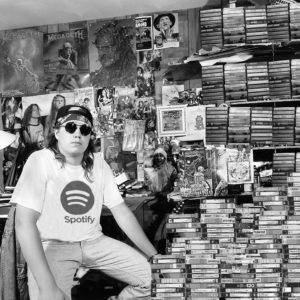 Visionary photomontage are grayscale photos from the past edited to look like a scene from the future with a colorful technology of the future. Image sources are found in online repositories and archives, requiring to imagine possibilities of localized futuring. It is possible to use image generation AI such as DALL-E and Craiyon to produce […] - Sep 29, 2022
Visionary photomontage are grayscale photos from the past edited to look like a scene from the future with a colorful technology of the future. Image sources are found in online repositories and archives, requiring to imagine possibilities of localized futuring. It is possible to use image generation AI such as DALL-E and Craiyon to produce […] - Sep 29, 2022 -
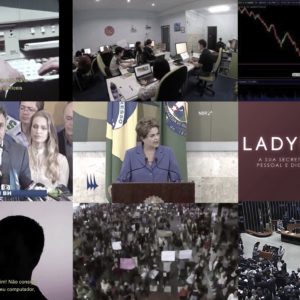
Speculative design mockumentary
A mockumentary movie about a future reality that could have happened in the past if a controversial technology of the present had become available in that past. Design mockumentaries aim at creating a reality that did not exist, does not exist, but that may exist sooner or later in the near future, as any design […] - Sep 29, 2022 -
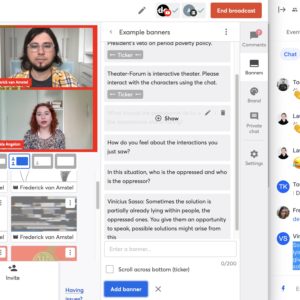 Forum Theater provides a forum to test and rehearse actions and responses to oppressive situations in the form of an interactive play. What differentiates Forum Theatre from other interactive theatre techniques is precisely its political goal of human and social emancipation. By stimulating the spectator’s effective intervention, Forum Theatre seeks to provoke reflections about the forms of […] - Apr 17, 2022
Forum Theater provides a forum to test and rehearse actions and responses to oppressive situations in the form of an interactive play. What differentiates Forum Theatre from other interactive theatre techniques is precisely its political goal of human and social emancipation. By stimulating the spectator’s effective intervention, Forum Theatre seeks to provoke reflections about the forms of […] - Apr 17, 2022 -
 Reaction to computer-mediated oppression can be rehearsed in a Theater of the Techno-Oppressed session. When using the image theater technique, it is possible to capture every attempt to react to oppression and compare their efficacy in still photos. In addition to the spect-actors who stage the play, two persons are required: a photographer and a […] - Mar 27, 2022
Reaction to computer-mediated oppression can be rehearsed in a Theater of the Techno-Oppressed session. When using the image theater technique, it is possible to capture every attempt to react to oppression and compare their efficacy in still photos. In addition to the spect-actors who stage the play, two persons are required: a photographer and a […] - Mar 27, 2022 -
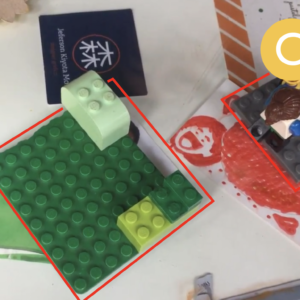 Storyblocks is the tridimensional equivalent of the storyboard: it represents the basic elements of a scene sequence in a film or animation movie through building blocks. After building the scene and materializing its components, the framing and camera movements can be experimented with using still photos or improvised videos. It is a fast low-fidelity technique […] - Mar 26, 2022
Storyblocks is the tridimensional equivalent of the storyboard: it represents the basic elements of a scene sequence in a film or animation movie through building blocks. After building the scene and materializing its components, the framing and camera movements can be experimented with using still photos or improvised videos. It is a fast low-fidelity technique […] - Mar 26, 2022 -
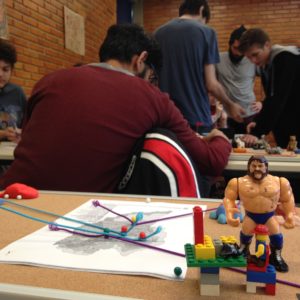 Map with a conceptual diagram of the ecosystem of interactions between people and objects in a specified past or future. These objects were firstly used as protagonists of an object theater (Buur & Friis, 2015) and, second, mapped to local ecology. Teachers provided a corkwood plate, pins, strings, Lego building blocks, and a printed map […] - Feb 3, 2022
Map with a conceptual diagram of the ecosystem of interactions between people and objects in a specified past or future. These objects were firstly used as protagonists of an object theater (Buur & Friis, 2015) and, second, mapped to local ecology. Teachers provided a corkwood plate, pins, strings, Lego building blocks, and a printed map […] - Feb 3, 2022 -
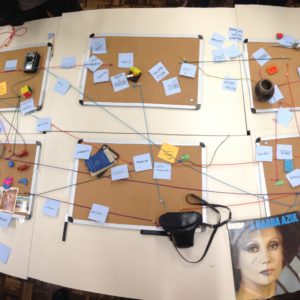 Showing an object that has endured many decades and telling the human stories that this object was part of, highlighting its relation to other objects, places, and people. The relations are drawn with strings tied to pins over several corkwood plates, which effectively grouped the objects. Can be used in Speculative Design to ground future […] - Feb 3, 2022
Showing an object that has endured many decades and telling the human stories that this object was part of, highlighting its relation to other objects, places, and people. The relations are drawn with strings tied to pins over several corkwood plates, which effectively grouped the objects. Can be used in Speculative Design to ground future […] - Feb 3, 2022 -
 It is a photograph taken from an existing technology that makes it look like a futuristic technology, usually taken with a macro lens and close framing not to be entirely recognizable. Can be used as a quick Speculative Design exercise or as a Cultural Probe. It is useful for engaging people who are not used […] - Feb 3, 2022
It is a photograph taken from an existing technology that makes it look like a futuristic technology, usually taken with a macro lens and close framing not to be entirely recognizable. Can be used as a quick Speculative Design exercise or as a Cultural Probe. It is useful for engaging people who are not used […] - Feb 3, 2022 -
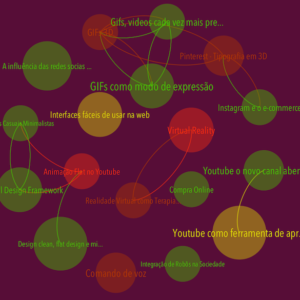 Graphs are mathematical structures that relate a sequence of entities that share an abstract connection between them. The connections are expressed through edges (links) that connect the related entities (nodes). Graphs are mostly used to find similar entities of different kinds through common linking patterns. Graph visualization is a common technique employed by social network […] - Feb 2, 2022
Graphs are mathematical structures that relate a sequence of entities that share an abstract connection between them. The connections are expressed through edges (links) that connect the related entities (nodes). Graphs are mostly used to find similar entities of different kinds through common linking patterns. Graph visualization is a common technique employed by social network […] - Feb 2, 2022 -
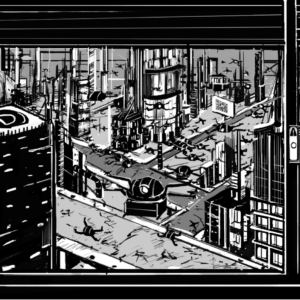 Rhythmanalysis is a method developed by Henri Lefebvre and Catherine Regulier to grasp the rhythms of everyday life in urban space through an embodied and historicized approach. The researcher uses her/his/their body to feel, sense, and join the rhythm while developing critical consciousness of its historical origins. Speculative Rhythmanalysis Speculative Rhythmanalysis is a derived method […] - Feb 2, 2022
Rhythmanalysis is a method developed by Henri Lefebvre and Catherine Regulier to grasp the rhythms of everyday life in urban space through an embodied and historicized approach. The researcher uses her/his/their body to feel, sense, and join the rhythm while developing critical consciousness of its historical origins. Speculative Rhythmanalysis Speculative Rhythmanalysis is a derived method […] - Feb 2, 2022 -
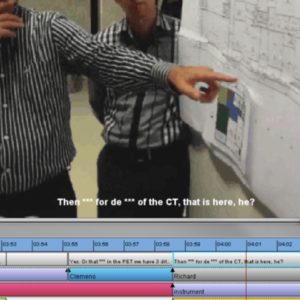
Video-based interaction analysis
Interaction analysis, as proposed by Jordan & Henderson (1995), is a research method rooted in the accumulated experiences of researchers at the Xerox PARC center and other places. This approach draws on various qualitative methodologies, including visual anthropology, conversational analysis, and ethnomethodology. It focuses on examining how individuals interact within their social and cultural contexts, […] - Jan 27, 2021 -
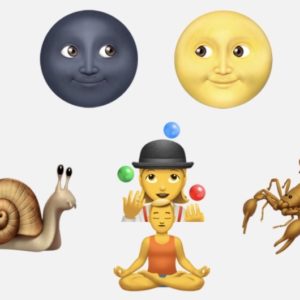 Visual oxymoron is a graphic representation of a contradiction codesigned by those who face that contradiction in everyday life. In written language, an oxymoron is a figure of language that displays interconnected opposing ideas. A visual oxymoron displays the opposite forces of a contradiction in a single image. The representation can be made through visual […] - Jan 27, 2021
Visual oxymoron is a graphic representation of a contradiction codesigned by those who face that contradiction in everyday life. In written language, an oxymoron is a figure of language that displays interconnected opposing ideas. A visual oxymoron displays the opposite forces of a contradiction in a single image. The representation can be made through visual […] - Jan 27, 2021 -
 Visual dialogue is a hybrid between visual thinking, scribing, and dialogic action. In this process, ideas are expressed through simultaneous verbal and visual communication. Visual dialogue is a way of thinking and communicating that combines speech and drawing to help make abstract ideas more concrete. Often, when people start a conversation about a complex topic, […] - Jan 27, 2021
Visual dialogue is a hybrid between visual thinking, scribing, and dialogic action. In this process, ideas are expressed through simultaneous verbal and visual communication. Visual dialogue is a way of thinking and communicating that combines speech and drawing to help make abstract ideas more concrete. Often, when people start a conversation about a complex topic, […] - Jan 27, 2021 -
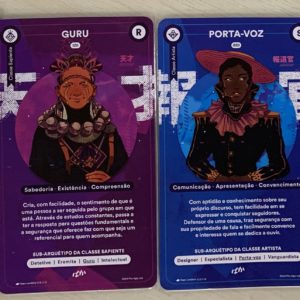
Existentialist advisory practice
When advising a thesis project, I begin by helping the student to locate the project within personal, professional, and societal development. I advise them to think about their projects as existential projects, as a way of becoming more than what they already are. We stumble upon the barriers to becoming more and question who else […] - Jan 27, 2021 -
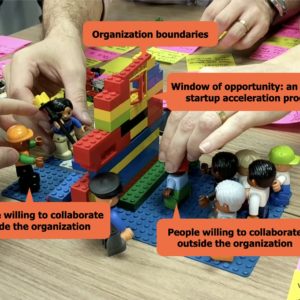 Germ cell model is a representation of a contradiction that is at the forefront of activity development. It features the dialectical reason why development is not advancing further as expected, and a possible path to overcome the barriers. Models are rather ambivalent in the way they represent contradictions, since they may not solve the contradiction. There […] - Jan 27, 2021
Germ cell model is a representation of a contradiction that is at the forefront of activity development. It features the dialectical reason why development is not advancing further as expected, and a possible path to overcome the barriers. Models are rather ambivalent in the way they represent contradictions, since they may not solve the contradiction. There […] - Jan 27, 2021 -
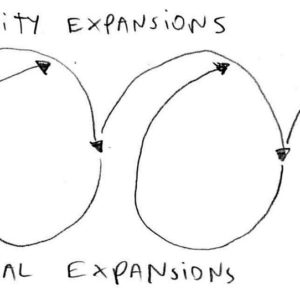 Formative Intervention is a method for studying concept formation inside organizations in moments of turmoil, confusion, or stagnation (Engeström, 2011). The interventionist researcher identifies the contradictions hindering organization development and presents them for discussion with the research participants. Typically, the researcher brings theoretical concepts from Cultural Historical Activity Theory (CHAT) to explain and analyze these […] - Jan 27, 2021
Formative Intervention is a method for studying concept formation inside organizations in moments of turmoil, confusion, or stagnation (Engeström, 2011). The interventionist researcher identifies the contradictions hindering organization development and presents them for discussion with the research participants. Typically, the researcher brings theoretical concepts from Cultural Historical Activity Theory (CHAT) to explain and analyze these […] - Jan 27, 2021 -
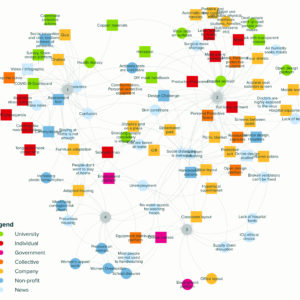
Controversial design space mapping
Design space mapping is widely used in cognition studies to trace ideation activity through a series of mental states. Controversial design space mapping expands this method with the friction generated by the clash of ideas coming from different minds. Each idea is classified as a problem (dark circle) or a solution (white square). A color […] - Jan 2, 2021 -

Commoning Design: a Pluriversal Slide-Deck
The Commoning Design pluriversal slide-deck is the outcome of a collaborative effort which involved people with different interests, skills, and backgrounds united by their shared curiosity around the relationship between commoning and design. Such effort took place in the context of the Participatory Design Conference 2020 and organized around the workshop “Commoning Design and Designing Commons”. This deck […] - Dec 8, 2020 -
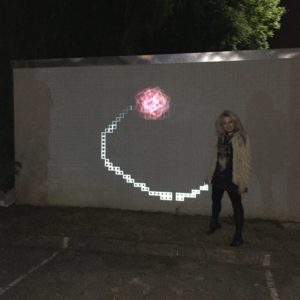 Creative coding can be described as a programming style that seeks to express values, feelings, meanings, and ideas through software code. For example, I designed the Coralizando book cover with a Processing script to express the plurality of the book contributors in a way I wouldn’t be able with a regular drawing. This style is […] - Jun 11, 2020
Creative coding can be described as a programming style that seeks to express values, feelings, meanings, and ideas through software code. For example, I designed the Coralizando book cover with a Processing script to express the plurality of the book contributors in a way I wouldn’t be able with a regular drawing. This style is […] - Jun 11, 2020 -
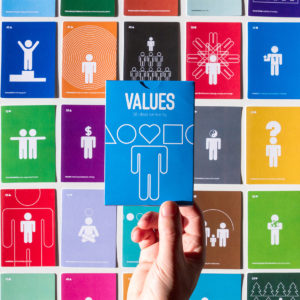 This method uses Genis Carrera’s Values Deck to visualize the priorities of a group, project, or organization. The method is relatively simple: gathering the people involved to vote on the human values they want to produce together. Each card represents a human value, such as sustainability, creativity, wealth, etc. They are laid down on a […] - Jun 10, 2020
This method uses Genis Carrera’s Values Deck to visualize the priorities of a group, project, or organization. The method is relatively simple: gathering the people involved to vote on the human values they want to produce together. Each card represents a human value, such as sustainability, creativity, wealth, etc. They are laid down on a […] - Jun 10, 2020 -
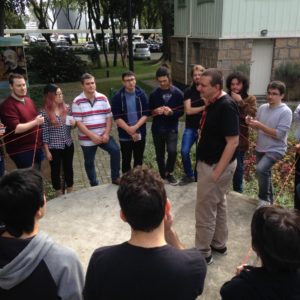 New business generates value through a provisional network of relations, including strategic partners, suppliers, and clients. Young entrepreneurs take time to understand that starting up a company does not depend on themselves only. Value-net is a strategic framework created by Cinzia Parolini (1999) to understand and manage the network of relationships within a business ecosystem. […] - May 18, 2020
New business generates value through a provisional network of relations, including strategic partners, suppliers, and clients. Young entrepreneurs take time to understand that starting up a company does not depend on themselves only. Value-net is a strategic framework created by Cinzia Parolini (1999) to understand and manage the network of relationships within a business ecosystem. […] - May 18, 2020 -
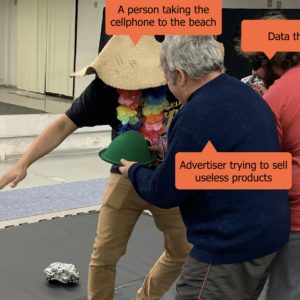
Theater of the Techno-Oppressed
Despite all the hype and hope around it, technology is not inherently good. Historically, technology has often intensified oppressions such as xenophobia, sexism, and racism. Social movements, activist groups, and oppressed people need to be aware of how technology does that and, especially, how it uncovers that under the pretext of neutrality. Theater of the […] - Apr 6, 2020 -
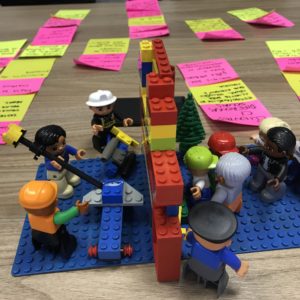
Lego Physical Oxymoron (LEPOX)
LEPOX challenges the participants to collaboratively identify and materialize a contradiction using Lego pieces. This game is inspired by the LEGO Serious Play ® method, which relies upon physical metaphors for improving team communication. The participants are invited to make a model of what they perceive to be a contradiction in terms — a physical […] - Apr 6, 2020 -
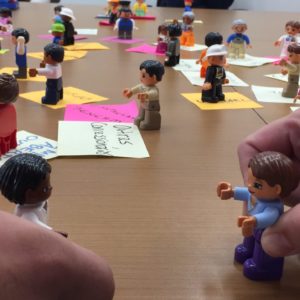
Stake Holder Analysis with Lovely Links (SHALL)
SHALL is short for Stake Holder Analysis with Lovely Links. It consists of mapping all the stakeholders possibly interested in a problem through their organization and inter-organizational relationships. Each stakeholder is mapped as a doll and relationships are loosely represented as a thread connecting the dolls. The game starts by asking the participants to map […] - Apr 6, 2020 -
 Copel+ is an open innovation platform designed for a utility company in Brazil as part of a research project that focused on organizational learning. The company had just started the transition to smart grids and realized that it was necessary to nurture the regional entrepreneurial ecosystem to populate the grid. The platform sponsors believed that […] - Mar 24, 2020
Copel+ is an open innovation platform designed for a utility company in Brazil as part of a research project that focused on organizational learning. The company had just started the transition to smart grids and realized that it was necessary to nurture the regional entrepreneurial ecosystem to populate the grid. The platform sponsors believed that […] - Mar 24, 2020 -
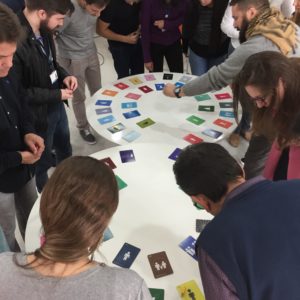 Design patterns deconstructs the myth that design projects are created by a single consciousness, the lonely designer. Every project, be that developed by a single designer or by a design team, reproduces common patterns that society at large cultivates. Card decks collect and organize design patterns with common problems and solutions in a certain design […] - Nov 22, 2018
Design patterns deconstructs the myth that design projects are created by a single consciousness, the lonely designer. Every project, be that developed by a single designer or by a design team, reproduces common patterns that society at large cultivates. Card decks collect and organize design patterns with common problems and solutions in a certain design […] - Nov 22, 2018 -
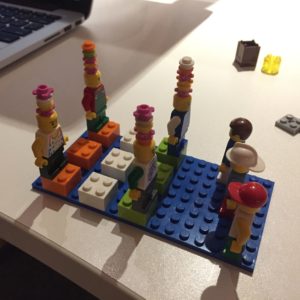 Lego is a great tool to build early prototypes of games and apps. I like. to stimulate students to supplement talking with making to increase shared understanding. Physical prototypes are quicker to build together in a team and can be used to test if ideas work in the real world. In this video, participants learn […] - Nov 22, 2018
Lego is a great tool to build early prototypes of games and apps. I like. to stimulate students to supplement talking with making to increase shared understanding. Physical prototypes are quicker to build together in a team and can be used to test if ideas work in the real world. In this video, participants learn […] - Nov 22, 2018 -
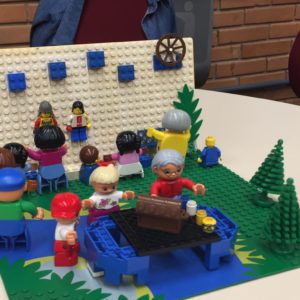 The Experience Map is an abstract representation which might not be understood by stakeholders who are responsible for shaping that experience. Since their participation is essential to stage the experience, I developed a Tangible Experience Model with uses Lego pieces to represent the relationships between people, things, spaces, and activities. Since the model’s meaning relies […] - Nov 4, 2018
The Experience Map is an abstract representation which might not be understood by stakeholders who are responsible for shaping that experience. Since their participation is essential to stage the experience, I developed a Tangible Experience Model with uses Lego pieces to represent the relationships between people, things, spaces, and activities. Since the model’s meaning relies […] - Nov 4, 2018 -
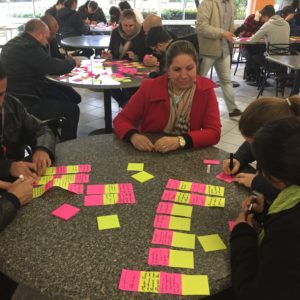
Problem Solution Problem (PSP)
The Problem Solution Problem (PSP, also known as PS³) game, developed by Frederick van Amstel and Guilherme Silveira is designed to explore and address collective creativity within the context of problem-solving. - Nov 1, 2018 -
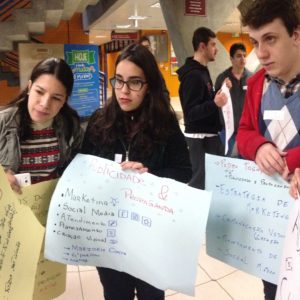 Idea Market is a design game developed to facilitate the pitching and development of new business ideas, while encouraging the formation of partnerships in entrepreneurship programs. The game simulates the dynamics of a startup ecosystem, where participants play both entrepreneurial and investor roles. Each player begins with an individual idea, sketched on paper, and progresses […] - Nov 1, 2018
Idea Market is a design game developed to facilitate the pitching and development of new business ideas, while encouraging the formation of partnerships in entrepreneurship programs. The game simulates the dynamics of a startup ecosystem, where participants play both entrepreneurial and investor roles. Each player begins with an individual idea, sketched on paper, and progresses […] - Nov 1, 2018 -

Classroom-to-Studio Transformation
I like to teach through developing projects as done in design studios. Most of the times, students need to adapt regular classrooms to work like design studios. I encourage them to appropriate the classroom space in any way that is better to support their creative activities. Along the years, we learnt together many ways to […] - Nov 1, 2018 -
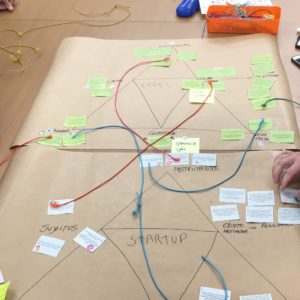 Change Laboratory is a method developed by CRADLE to help organizations change routines, deal with conflicts, and create new ideas through a participatory approach. The method consists of three different moments: 1) presenting contradictions found through ethnographic research in the organization; 2) analyzing the systemic nature of these contradictions through organizational models; 3) generating new […] - Nov 1, 2018
Change Laboratory is a method developed by CRADLE to help organizations change routines, deal with conflicts, and create new ideas through a participatory approach. The method consists of three different moments: 1) presenting contradictions found through ethnographic research in the organization; 2) analyzing the systemic nature of these contradictions through organizational models; 3) generating new […] - Nov 1, 2018 -
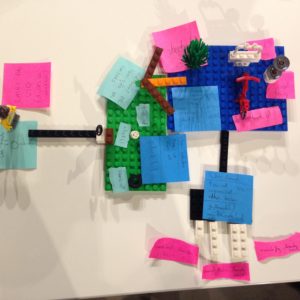 Unified Modeling Language (UML) is a set of standard diagrams and notations for creating software. We created at PUPCR a physical version of these diagrams with Lego to enable the participation of designers, clients, and users in software architecture and modeling activities. The concrete representations help the participants understand and make good use of software […] - Nov 1, 2018
Unified Modeling Language (UML) is a set of standard diagrams and notations for creating software. We created at PUPCR a physical version of these diagrams with Lego to enable the participation of designers, clients, and users in software architecture and modeling activities. The concrete representations help the participants understand and make good use of software […] - Nov 1, 2018 -
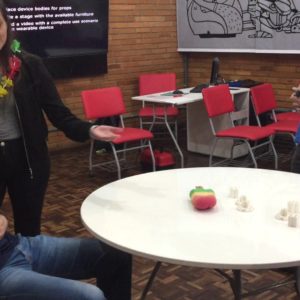 Improvised Videos are short films recorded with smartphones to support a codesign process. They represent everyday scenarios where the design object plays a protagonist role. The interaction with the design object is depicted through variegated film and theater techniques such as enactment, role playing, props, puppets, cuts, and transitions. The main advantage of using video […] - Nov 1, 2018
Improvised Videos are short films recorded with smartphones to support a codesign process. They represent everyday scenarios where the design object plays a protagonist role. The interaction with the design object is depicted through variegated film and theater techniques such as enactment, role playing, props, puppets, cuts, and transitions. The main advantage of using video […] - Nov 1, 2018 -
 I’m developing further the Lego Serious Play method to support Expansive Design, in particular, to represent tough contradictions in a humorous style. This is useful when people avoid talking about contradictions openly or deny their existence. The pretext of play enables critical voices and radical alternatives to emerge. References Van Amstel, Frederick M.C. (2021). The […] - Oct 31, 2018
I’m developing further the Lego Serious Play method to support Expansive Design, in particular, to represent tough contradictions in a humorous style. This is useful when people avoid talking about contradictions openly or deny their existence. The pretext of play enables critical voices and radical alternatives to emerge. References Van Amstel, Frederick M.C. (2021). The […] - Oct 31, 2018 -
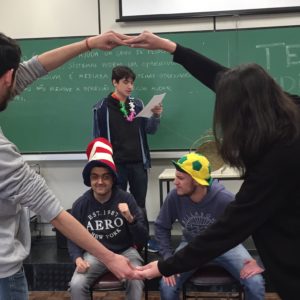 Interaction design, like theater, depends on the performances of human actors to realize its aesthetic expression. Interaction designers create software code much like theater scripts, while users often ignore them and improvise. Drawing from the analogy of Computer as Theater proposed by Brenda Laurel and the Theater of the Oppressed developed by Augusto Boal, this […] - Oct 31, 2018
Interaction design, like theater, depends on the performances of human actors to realize its aesthetic expression. Interaction designers create software code much like theater scripts, while users often ignore them and improvise. Drawing from the analogy of Computer as Theater proposed by Brenda Laurel and the Theater of the Oppressed developed by Augusto Boal, this […] - Oct 31, 2018 -

Design ethnography with activity theory
Design ethnography is a field study method that aims at uncovering user needs and innovation opportunities. Through this method, anthropologists can help understand the context, bringing up semantic, emotional, and social issues that may represent innovation opportunities. However, most design ethnographies are not carried out by trained anthropologists. Design ethnography is typically conducted by designers themselves, […] - Oct 28, 2016 -
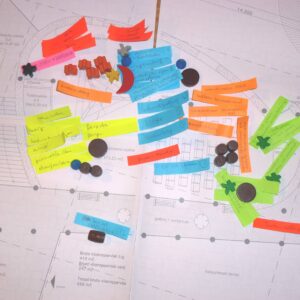 Design games are created for specific projects or reused from past projects to develop concepts that have real consequences in a participatory project. The outcomes of these games serve not only to inform but also to guide, plan, and frame the project, creating an environment conducive to more creative and informed decision-making. These games often […] - Sep 10, 2016
Design games are created for specific projects or reused from past projects to develop concepts that have real consequences in a participatory project. The outcomes of these games serve not only to inform but also to guide, plan, and frame the project, creating an environment conducive to more creative and informed decision-making. These games often […] - Sep 10, 2016 -
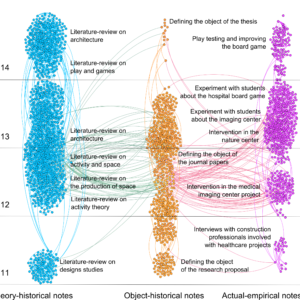
Regressive-progressive historical analysis
The Expansive Design thesis was crafted on the historical analysis methods used in Cultural Historical Activity Theory (Engeström) and Production of Space Theory (Lefebvre). This page explains in detail how data was collected and analyzed. The open data is publicly available for browsing. Historical analysis in the production of space is called regressive-progressive (Lefebvre, 1991; […] - Aug 11, 2015 -
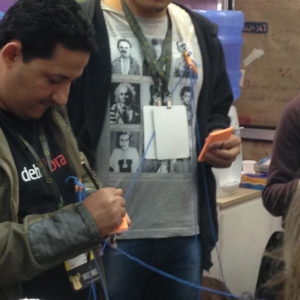
The Conceal and Show Game (2015)
The way Facebook conceals or shows up messages in the news feed is a mystery to most users. Facebook gives the impression that if a user posts a status update, all of her friends receive it in the timeline, but that is not always true. The Edgerank algorithm decides what is shown in the timeline based on three variables: This abstract […] - Jul 31, 2015 -

Double stimulation experiments
For my PhD research, I had to do some experiments in design education. Design education is characterized by a learning-by-doing approach when the learner is pushed to take the lead of experimentation. This represents a problem for design educators who also want to test the research hypothesis within teaching activities since it is not easy […] - Dec 20, 2014 -
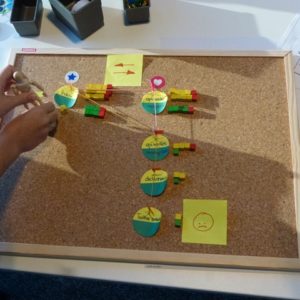
Low-tech to high-tech visualization
The World Usability Day was for the first time organized here at the University of Twente. In this event, I shared a practical output of my PhD research: a method to gather user data using low-tech materials. The method consists of collecting data through low-tech visualization and using the data to build high-tech visualizations, following […] - Nov 25, 2014 -
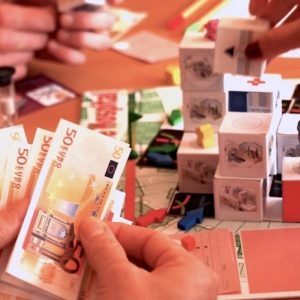
The Expansive Hospital Game (2013)
The Expansive Hospital is a board game in which players collaborate and compete to build a hospital with plastic blocks. The game design is based on research conducted with three healthcare construction projects in the Netherlands, commissioned by Pioneering. The research found that hospital design is often over schedule due to the conflicts of interests […] - Nov 12, 2013 -
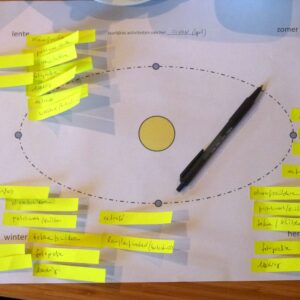 Grounding Activities is a participatory design game developed as part of a nature center project to help stakeholders speculate their future activities over a proposed architectural space. The game follows a structured process in three phases, guiding participants to explore their activities’ temporal and spatial dimensions and assess how well a proposed design meets their […] - Sep 10, 2013
Grounding Activities is a participatory design game developed as part of a nature center project to help stakeholders speculate their future activities over a proposed architectural space. The game follows a structured process in three phases, guiding participants to explore their activities’ temporal and spatial dimensions and assess how well a proposed design meets their […] - Sep 10, 2013 -
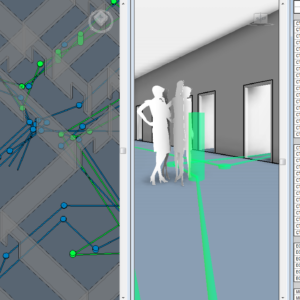
Walking paths parametric design tool (2012)
Walking Paths is an extension for Autodesk Revit, an industry standard tool for architectural design. The extension allows tracing the paths that patients, nurses, and other users should follow inside a facility. The application provides objective criteria to evaluate the work efficiency of a particular facility design. Walking_Paths [RFA] An Autodesk Revit parametric design family […] - Dec 13, 2012 -
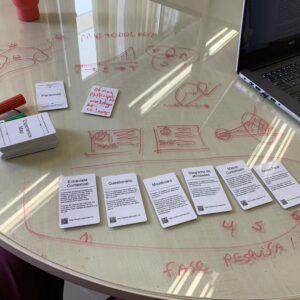 A card deck for collaborative planning user experience projects. Each card is a UX method, with the necessary inputs and the expected outputs. The cards can be organized in a linear fashion to represent the planned process. There are also cards for representing risks, expected delays, and extra human/financial resources. UX Cards enables pattern-based codesign […] - Nov 24, 2011
A card deck for collaborative planning user experience projects. Each card is a UX method, with the necessary inputs and the expected outputs. The cards can be organized in a linear fashion to represent the planned process. There are also cards for representing risks, expected delays, and extra human/financial resources. UX Cards enables pattern-based codesign […] - Nov 24, 2011 -
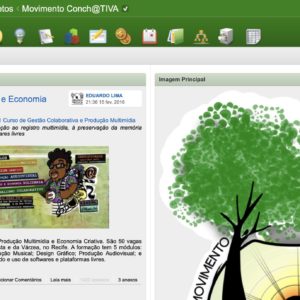 Corais was launched in 2011 as the open innovation platform of Faber-Ludens Interaction Design Institute. Since 2012, it became an independent cooperative platform for cultural producers in Brazil, maintained by Instituto Ambiente em Movimento and developed by Frederick van Amstel as an outreach activity of his academic work. An open design platform Development forked from […] - Nov 14, 2011
Corais was launched in 2011 as the open innovation platform of Faber-Ludens Interaction Design Institute. Since 2012, it became an independent cooperative platform for cultural producers in Brazil, maintained by Instituto Ambiente em Movimento and developed by Frederick van Amstel as an outreach activity of his academic work. An open design platform Development forked from […] - Nov 14, 2011 -
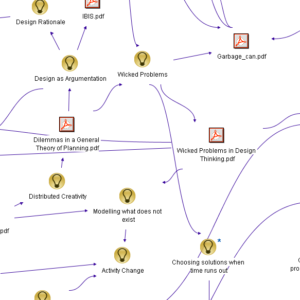
Issue-Based Information System (IBIS)
Since I started doing my PhD Research, I learnt a lot of new concepts, but I don’t like to write down everything that I find interesting during my research. I find it too boring. I prefer to rely on my memory filter; if it’s relevant, I’ll remember when needed. But, gosh, that’s not always the […] - Aug 12, 2011